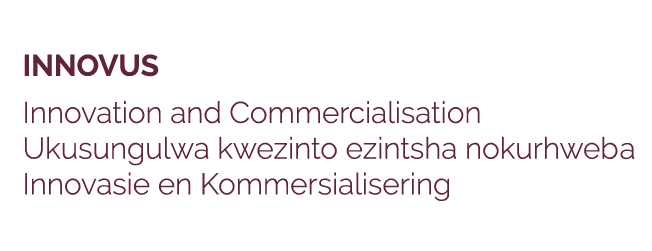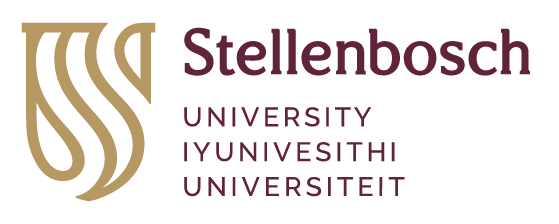Incubated by Innovus, Stellenbosch University's technology transfer office, Geosmart's advance space and geospatial application technology products and services now provide solutions for renewable energy projects, hydrodynamic modelling, telecom and electric infrastuctures, wastewater management, winegrowers, ecological modulating and fog-harvesting, to name but a few. It is also one of the cornerstones in enabling communication between small farms and communities in rural areas.
Geosmart is the brainchild of geographer and computer scientist Prof Adriaan van Niekerk, Director: Stellenbosch University Centre for Geographical Analysis. It makes use of advance space and geospatial technologies, such as earth observation and machine learning, to model future scenarios and provide information – at a fraction of the price of a land surveyor – that can improve efficiencies, reduce risk, and inform better decisions.
What makes Geosmart so much more cost-efficient is that they are using high-resolution aerial photographs as the first layer of their model. "South Africa is one of the very few countries in the world which not only updates its aerial photography library every four years but provides these images to the general public at no costs," says Van Niekerk. "You can make use of Google Maps to look at high-resolution satellite images, but to get access to the raw satellite data needed for analytical purposes can cost as much as R80 000 for a 100 km2 area. The same goes for the services of a land surveyor which can only provide information for small areas at a time due to the time and cost of traditional surveying methods."
Future behaviour changes
"We use cutting-edge technologies, such as geographical information systems (GIS), remote sensing, global navigation satellite systems (GNSS), mobile devices, cloud computing and artificial intelligence to find solutions to geographical problems; namely how things on the earth will change and behave in the future."
Apart from offering contour data at 50cm vertical intervals for anywhere in South Africa, its Stellenbosch University Digital Elevation model (SUDEM) is a 5 metre resolution digital elevation model of South Africa's entire terrain. It combines five different sources of terrain data and then processes the information through a purpose-built algorithm, which irons out inconsistencies.
DEMSA2, Geosmart's latest product, is a digital elevation model (DEM) of South Africa, that offers highly detailed (2 metre resolution), accurate and cost-effective terrain data which can be tailored to a client's needs. DEMSA2 has been extracted for more than 30% of our country and will soon cover the entire country.
"The flexibility of the DEM extraction technology means that it can autonomously collect data for anywhere in South Africa, as well as across the globe. Because of the high demand for accurate, detailed elevation data and the vast assortment of industries using such data, we are in a position to grow this company at a fast pace," said Van Niekerk.
Climate-related maps
Based in Stellenbosch, Geosmart's products are widely used in the agricultural industry, particularly in the Western Cape. He says that highly accurate climate surfaces is one of the few value-added products that can be generated from the DEMSA2. Because there is a powerful correlation between climate (such as temperature, rainfall or humidity) variability and terrain, Geosmart's products are ideal for generating climate-related maps.
These maps are invaluable in the agricultural industry, in particular for wine and fruit production as they are critical in determining wine flavour profiles and for identifying areas suitable for specific cultivars. Rapid changes in climate is a big challenge for agricultural industries because producers can no longer rely on past experience.
The Wine Industry Network of Expertise and Technology (Winetech) made funding available to Stellenbosch University and the Centre for Geographical Analysis (CGA) and Geosmart is collaborating by providing its products for developing a frequently-updated (hourly interval) climate database which is used to identify temporal and geographical trends in climate variations.
Van Niekerk started with DEM generation research back in 2002 when the then Cape Nature Conservation (now Cape Nature) asked him to create a DEM for the Western Cape. "The challenge was huge because there were no data available. After lots of hard work SUDEM came about and the technology that was developed was patented through Innovus. The technology was later licensed to Geosmart. SU's Centre for Geographical analysis (CGA) is an independent unit that is fully funded from outside of the University.
Geosmart’s clientele
A diverse set of clients make use of Geosmart's product across the world. Amongst them are G7 Renewable Energies, a SA company specialising in wind energy development. The company is making use of Geosmart's DEMSA2 data to improve the performance of its wind flow modelling in cliffy and ridgy areas.
Geosmart provided DEMSA2 data to the engineering survey firm Tritan Survey for a social responsibility project they conducted in Franschhoek in collaboration with the SA National Defence Force. The project involved using DEMSA2 for hydrologic modelling to conduct a risk assessment on a damaged wastewater treatment facility at the onset of the COVID-19 epidemic.
Justin Wigget, a PhD-student from the Ruhr-Universität, purchased DEMSA2 to integrate into the iWaGSS integrated water governance project - a multinational partnership between German and South-African researchers. According to Wigget, DEMSA2 data are being used for hydrodynamic modelling in the Ga-Salati river network, to extract river-profile information to use to model river discharge. "DEMSA2 has proven invaluable for this project, in offering unparalleled quality for such a large area," said Wigget.
DEMSA2 data was provided to use as part of MSc student, Zhicheng Xu's research project. Xu is from the Massachusetts Institute of Technology (MIT) department of agriculture. The research project utilised DEMSA2 data to aid an investigation on wastewater management and a suitability analysis for fog-harvesting technology.
Square Kolometre Array
As part of his study to provide communication for the community around the Square Kilometre Array (SKA) telescope, Dr Riaan Wolhuter, a senior researcher at SU's electrical and electronic engineering faculty, make use of Geosmart information.
Wolhuter said that because of the sensitivity of the telescopes, very few forms of radio communication are permissible in that environment. "The study is about selecting strategic positions to place low-power microwave stations to provide connectivity to farms and small communities. These positions require a balance between geographical suitability in terms of coverage, the choice of equipment and frequencies, but then again topographic shielding with regard to the telescopes."
He said by sitting and staring at Google Earth to determine this is an enormous amount of work and insufficient. "We use an advanced software package to do the radio calculations, but then enter Geosmart information as part of its database. Contour information is the prime addition.”
Media queries
Petro Mostert
C 0823346193
petromostert@sun.ac.za
Innovus, Stellenbosch University
|
15 De Beer Street
Stellenbosch
7600
South Africa
|
PO Box 3135
Matieland
7602
South Africa
|
|
t +27 (0) 21 808 3826
e info@innovus.co.za
e forms@sun.ac.za |

